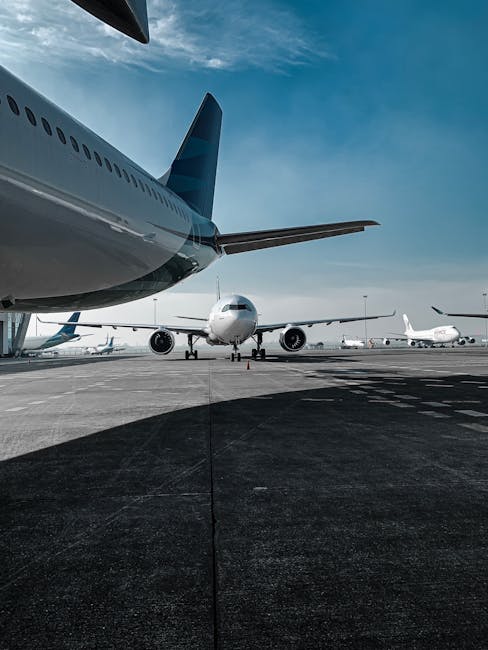In the annals of aviation history, some aircraft are celebrated for their beauty, some for their speed, and others for their revolutionary impact. But few are as delightfully odd and historically significant as the Italian Stipa-Caproni—a barrel-shaped, propeller-powered prototype that, despite its ungainly looks, quietly paved the way for the jet age.
The Early Quest for Speed and Efficiency
The 1920s and 1930s were a period of fearless experimentation in aviation. Engineers and inventors across the globe were engaged in a relentless pursuit to make aircraft faster, more efficient, and, crucially, to break free from the limitations of the piston engine and the exposed propeller. This was the era that gave birth to streamlined monoplanes, retractable landing gear, and metal airframes. In this innovative context, Luigi Stipa, an Italian aeronautical engineer, proposed something truly radical—a tubular fuselage that functioned as a giant ducted fan. His vision: to harness airflow and propeller thrust in a way nobody had dared attempt before.
Meet the Stipa-Caproni: The “Flying Barrel”
In 1932, Stipa partnered with aircraft manufacturer Caproni to bring his design to life. The result? The Stipa-Caproni, sometimes affectionately called the “Flying Barrel.” At first glance, the aircraft almost looked like a cartoon, with a bulbous, barrel-shaped fuselage and stubby wings. But the design was anything but whimsical. Stipa’s core innovation was the intubed propeller—a propeller housed inside a tube that formed the main body of the aircraft. The engine sat inside this tube, spinning a wooden propeller. As air was drawn through the barrel and expelled at the rear, the tube itself created a venturi effect, increasing the speed and efficiency of the airflow and, by extension, the thrust.
Was It the First Jet?
While not a jet in the sense of modern turbojets or turbofans, the Stipa-Caproni was a direct ancestor to the jet engine. It used a propeller for thrust, but the entire propulsion system was housed in a tube, which is the basic principle behind all modern jet engines. In fact, the Stipa-Caproni’s design prefigured the ducted fan engines that would later become commonplace in both military and commercial jets. Some aviation historians go so far as to call it the “first jet aircraft”—a bold claim, perhaps, but not without merit.
Test Flights and Technical Insights
The Stipa-Caproni took to the skies for the first time in October 1932, piloted by Caproni test pilot Giovanni De Briganti. Despite its odd appearance, the aircraft was surprisingly stable, gentle to fly, and remarkably quiet—a testament to the sound-dampening effect of the intubed propeller. Test flights confirmed several key advantages:
- Increased Propulsive Efficiency: The ducted design mitigated tip vortex losses, focusing the flow of air and increasing the effective thrust of the propeller.
- Reduced Noise: The tube muffled much of the propeller’s noise, an early hint at the quieter engines that would characterize future passenger jets.
- Exceptional Stability: The large, central fuselage acted as a stabilizing keel, making the Stipa-Caproni easy to handle, even for novice pilots.
However, the design was not without its drawbacks. The aircraft’s drag was considerable due to the large cross-sectional area of the fuselage, limiting its speed. Its top speed was only about 131 km/h (81 mph)—hardly a record-breaker for its time. Still, as an experimental airframe, the Stipa-Caproni was never intended to set speed records, but rather to test an aerodynamic concept.
Why the Stipa-Caproni Matters
At a glance, the Stipa-Caproni might seem like a footnote in aviation history—a quirky dead-end. But in reality, its impact rippled far beyond its own brief flight career.
Firstly, the Stipa-Caproni’s ducted fan principle is now a fundamental element of modern jet engines. The turbofan, which powers the vast majority of airliners today, is essentially a giant ducted fan with a gas turbine in place of a piston engine. The “bypass air” that flows around the turbine core is accelerated by a large fan, enclosed within a nacelle—a direct descendant of Stipa’s intubed propeller.
Secondly, the Stipa-Caproni foreshadowed the importance of aerodynamic integration—the idea that engines should be blended with the airframe to maximize performance. This concept is echoed in the “blended wing body” designs and ultra-efficient engine nacelles seen in cutting-edge aircraft today.
Thirdly, the Stipa-Caproni’s approach to noise reduction was decades ahead of its time. While noise was not a major concern in the 1930s, today’s airports and communities place a premium on quieter engines. The muffling effect of ducted fans, first demonstrated on the Stipa-Caproni, is now a key selling point for modern passenger jets.
The Forgotten Bridge to the Jet Age
Despite these innovations, the Stipa-Caproni never entered production. The Italian Air Ministry was unconvinced by its modest performance, and the world’s attention soon turned to other propulsion experiments—most notably Frank Whittle’s and Hans von Ohain’s turbojet engines. Yet, it is impossible to ignore the intellectual debt that modern jet technology owes to Luigi Stipa’s vision.
Moreover, the Stipa-Caproni is a powerful reminder that sometimes, the most important advances come not from the successful, mainstream designs, but from the bold, unconventional prototypes that dare to ask “what if?” In the years that followed, ducted fan technology found its way into everything from modern airliners to drones, hovercraft, and even advanced VTOL (Vertical Take-Off and Landing) aircraft.
Legacy in Today’s Aviation
So, what does all this mean for today’s aviation industry, passengers, and technology enthusiasts?
- For Aircraft Designers: The Stipa-Caproni is a case study in thinking outside the box. Its aerodynamic principles echo in the latest ultra-high-bypass engines, which promise not just better fuel economy but also lower emissions and reduced noise—key concerns for the 21st century.
- For Passengers: The comfort, speed, and efficiency of the jets we board today owe a hidden debt to Stipa’s flying barrel. The smooth, quiet ride of a modern jetliner is a product of decades of refinement in ducted fan technology, starting with that first experimental flight in 1932.
- For Technology Geeks and Historians: The story of the Stipa-Caproni serves as a potent reminder that progress is rarely linear. Sometimes, radical experiments lay the groundwork for breakthroughs that only bear fruit generations later.
Conclusion: Celebrating the Oddballs of Aviation
The Stipa-Caproni may never have enjoyed the fame of the Spitfire, the Mustang, or the Boeing 707. It was never mass-produced, never fought in a war, and never set a world record. Yet, its legacy endures in every jet engine that thunders down a runway today. It is the forgotten experimental aircraft behind the jet engine evolution—the bridge between the age of propellers and the era of high-speed, high-altitude flight.
For aviation enthusiasts, the story of the Stipa-Caproni is more than a quirky footnote; it is a celebration of the spirit of innovation and the willingness to chase wild ideas. Next time you board a jetliner and feel the smooth surge of takeoff, spare a thought for the Italian engineers who, almost a century ago, dared to build—and fly—a flying barrel. Because sometimes, the most unconventional ideas are the ones that change the world.



